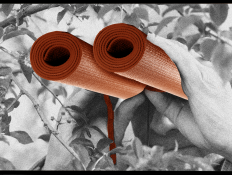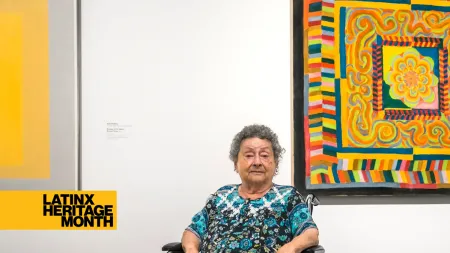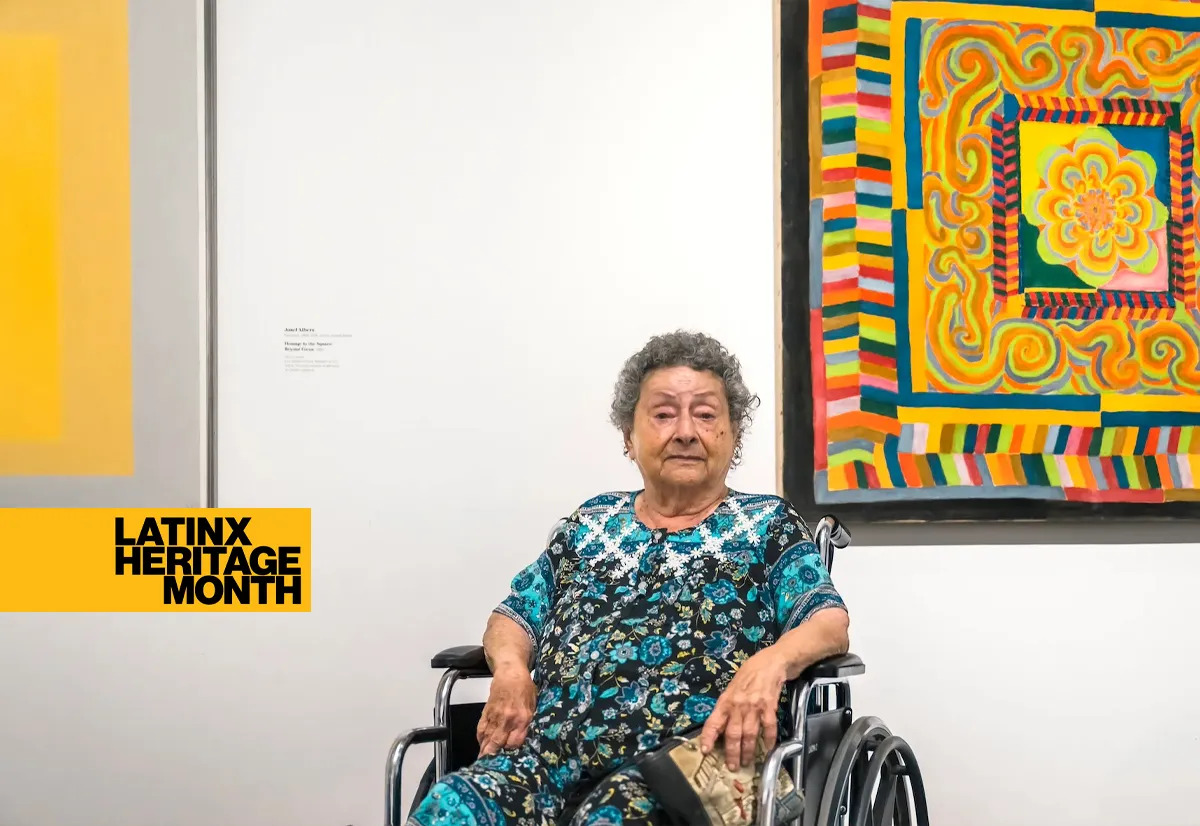
There are many ways to tell the story of Magdalena Suarez Frimkess. There is the narrative about the charming nonagenarian finally getting her due: At the age of 95, the artist, who was born in Venezuela and lives in Los Angeles, is currently having her first museum survey, “Magdalena Suarez Frimkess: The Finest Disregard,” at the Los Angeles County Museum of Art (LACMA). The day of the exhibition preview, she materializes in a bright floral dress in the company of her gallerist, Francesca Kaufmann, of Kaufmann Repetto, and gamely poses for photographs before her ceramic pieces, which fuse ancient forms and pop iconography. What would she like to achieve that she hasn’t yet? “Traveling to space,” quips Suarez Frimkess. “They can experiment with an old lady in space.”
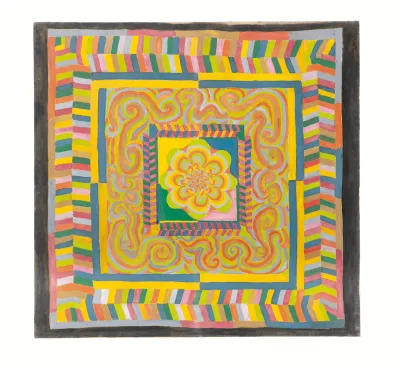
Magdalena Suarez Frimkess, Untitled, c. 1980s Courtesy of the artist and kaufmann repetto Milano/New York. Artwork copyright © Magdalena Suarez Frimkess. Photo copyright © Museum Associates/LACMA.
Another way to tell the story of Suarez Frimkess is through the dramatic arc of her life. Born in 1929 in Maturín, in the eastern Venezuelan province of Monagas, Suarez Frimkess was sent to an orphanage at the age of 7 following the death of her mother. There, a teacher noticed her gift for drawing, thereby launching a lifelong focus on art. “It was good,” she remembers, “because I hated embroidery.” A stint at the Escuela de Artes Plásticas (School of Plastic Arts) ultimately followed, where she studied under masters such as Mateo Manaure and Rafael Monasterios. But a union with a married man, and an attendant pregnancy, led her to cut short her studies and follow her lover to Chile. In Santiago, determined to pursue art, she enrolled at the Pontifical Catholic University, achieving acclaim for clay sculptures that evoked the female body.
Her partner, however, was opposed to her art-making, and when Suarez Frimkess was offered a residency at the Clay Art Center in Port Chester, New York, he told her that if she accepted, she shouldn’t return. She made the excruciating decision to leave him and their two children. Suarez says that being unmarried is what gave her the freedom to go, since divorce wasn’t legal in 1960s Chile. “I was in another society,” she says. “Because I wasn’t married I could go to the United States. I believe in destiny.”
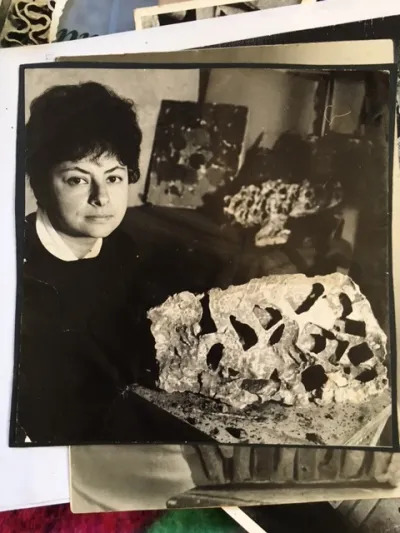
Destiny led her to Port Chester, where she met Los Angeles–born ceramist Michael Frimkess, who would eventually become her husband and collaborator. In 1964 they had a daughter, Luisa; late the following decade, Suarez was reunited with her children from Chile, Delia and Sergio. Suarez Frimkess’s family materializes in her work: Prominently displayed at LACMA is a 1996 piece titled Mercado Persa, a 4½-foot-tall vessel resembling an 18th-century Chinese temple vase made in collaboration with her husband. It shows family scenes mixed with comics characters and Venezuelan historical figures, a fusion of the artist’s hybrid worlds.
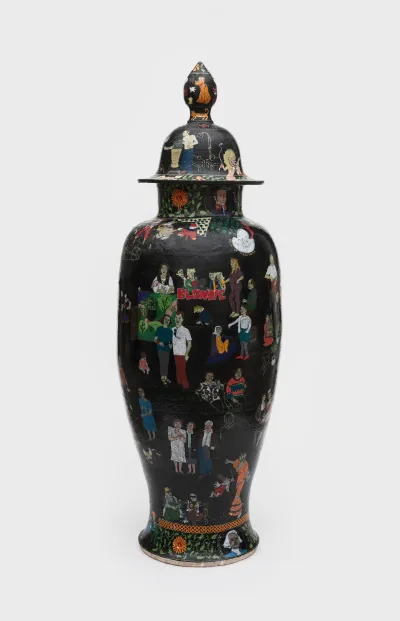
To focus exclusively on Suarez Frimkess’s life, however, is to muffle the story of her art and the many tales it encompasses. In 1971 Michael was diagnosed with multiple sclerosis, and Magdalena set aside her own work and began to collaborate with him. Michael employed a dry clay technique to produce elegant re-creations of Greek kraters and Chinese ginger jars whose surfaces Magdalena decorated with unlikely images: Mayan glyphs, abstract patterns, an array of comic book characters, including Minnie Mouse, Olive Oyl, the Katzenjammer Kids, and her favorite, Condorito, a character from a Chilean comic of the same name, about a perpetually underemployed condor. Hers are not ironic pop appropriations functioning as statements about mass culture. Instead, they mark a way of deploying a symbolic language to her own end.
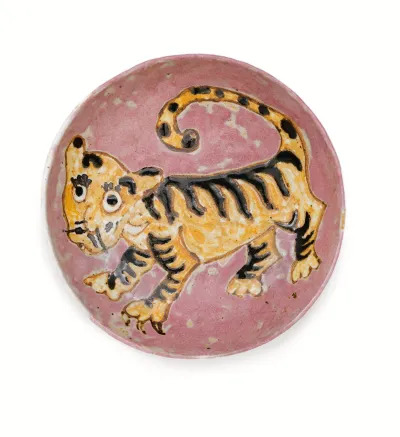
LA gallerist Louis Stern, who hosted a key exhibition of the couple’s work in 2000, says that Suarez Frimkess renders this imagery as the ancient Greeks did their own tales of monsters on vessels. “In 500 years, it could be viewed as Western mythology of the 20th century,” he says. “They are all the icons we grew up with.” In some of these, the artist finds connection to her own life: She has used Little Orphan Annie to symbolize herself, and a granddaughter who lives in Australia inspired a tea set featuring the Tasmanian Devil, of Looney Tunes fame. More broadly, figures such as Olive Oyl—shown fending off sharks in one piece—speak to how women are tested. Suarez Frimkess appreciates comics for the emotions they convey. “They are the best philosophers for me, they know everything,” she says. “They don’t have to speak the language. It’s a universal language.”
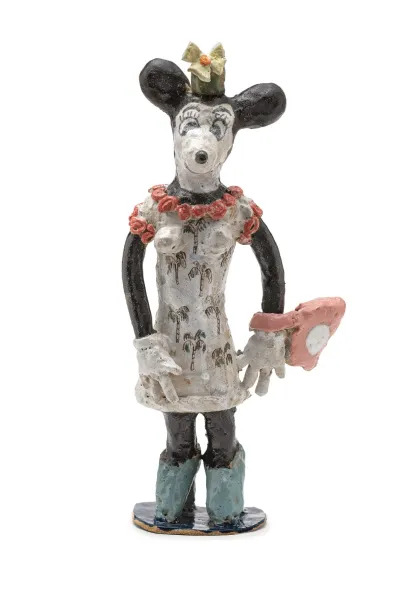
Over the years, Frimkess Suarez has made her own ceramics: cups, plates, teapots, and chalices that she constructs without a potter’s wheel. Unlike her husband’s perfectionist forms, hers lean and bend precariously. “She is more interested in the idea of the cup, not [in] creating a cup,” says the show’s curator, José Luis Blondet. “Those plates, you can’t put anything on them. They are really fragile. It’s more about shape and the stories they tell.” Suarez Frimkess’s disregard for the conventions of ceramic production, and the earnest yet whimsical way she deploys imagery, has gained her a following among fellow artists. Among collectors of work by the Frimkesses are Cindy Sherman, Ricky Swallow, and Jonas Wood. Swallow featured some of their ceramics in a 2013 show at David Kordansky Gallery in Los Angeles; included in the survey at LACMA is a drawing by Wood of one of their vessels. Over the years, the couple has caught the eye of museum curators too. In 2014 the Frimkesses were included in the Hammer Museum’s Made in L.A. biennial.
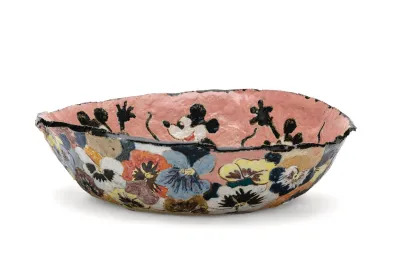
Ultimately, the meta-narrative embedded in Suarez Frimkess’s work is perhaps the most compelling story of all. She reproduces icons in her work, but they are often imbued with frailty and can feel abject. Perky Minnie Mouse might appear delirious or dejected; Condorito, as a fuzzy abstraction of himself. “Although funny and playful on the surface,” writes fellow ceramist Karin Gulbran in the exhibition catalog, “Magdalena’s work often contains something more searing and complex.” Suarez Frimkess takes the heroic and brings it into the realm of the everyday. As Blondet notes, the Condorito comic takes Chile’s majestic national bird—the Andean condor—and renders him as a struggling everyman, and Suarez Frimkess does the same for other such symbols. In a table she fabricated in 1973, she depicts Adam and Eve in the Garden of Eden, using figures inspired by Mesoamerican codices. Eve is shown raising one hand and coyly stating “no more apples for me” in English and Spanish. “Here’s the big myth that explains everything,” says Blondet. “And she’s like, ‘no more apples for me.’”
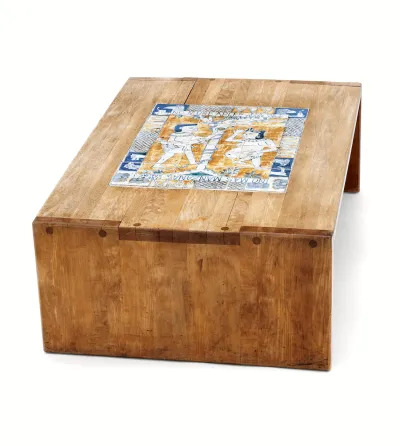
Condorito, her favorite subject, may not know his way around intellectual concepts, but he is wise to the ways of the world. “Condorito,” says Suarez Frimkess with a grin, “has the answer.” For our conversation, the artist and I stole away from the press preview to chat in a nearby gallery containing one of Richard Serra’s monumental sculptures. She nods in the direction of the towering steel. “I don’t like these things,” she says. “I like my cartoons more.” In Suarez Frimkess’s world, the slings of everyday life triumph over the heroic.
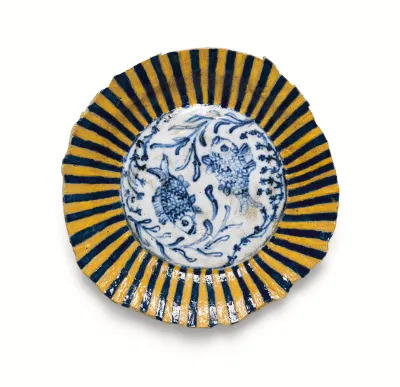
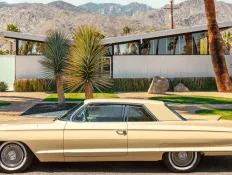
This New Coffee Table Book Explores the Lines Between Captivating Cars and Great Architecture

Michelle Obama Suits Up With Contemporary Edge in Versace’s Safety-pin Blazer for George Clooney’s Albie Awards 2024

Best smart locks, based on extensive expert testing

Gambling-Fueled Connecticut Sun Eye First WNBA Title
